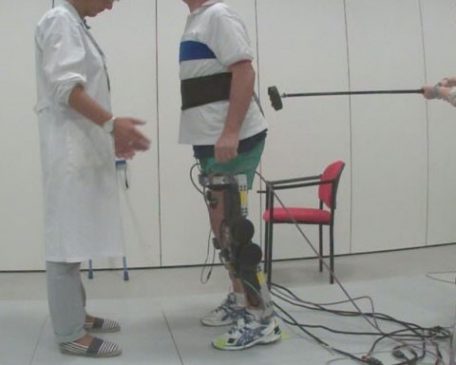HOT
 Production-Quality Lenses Directly from SLA 3D P…
Production-Quality Lenses Directly from SLA 3D P… Forging Ahead with Solar Energy and GibbsCAM CNC…
Forging Ahead with Solar Energy and GibbsCAM CNC… GibbsCAM Software Helps Race-Team Mechanics Beco…
GibbsCAM Software Helps Race-Team Mechanics Beco… Metro Aerospace Introduces 3D Printed Part for F…
Metro Aerospace Introduces 3D Printed Part for F… GibbsCAM Enables Rover Exploration Vehicle Parts…
GibbsCAM Enables Rover Exploration Vehicle Parts… Designing a Custom Boot for an Injured Penguin
Designing a Custom Boot for an Injured Penguin Asano Uses Geomagic 3D Scan Software to Drive In…
Asano Uses Geomagic 3D Scan Software to Drive In…
The Symbitron project
Body sway estimation for exoskeleton control

The Symbitron project is a European FP7 project that is all about exoskeleton design for people with a spinal cord injury. Exoskeletons that are currently on the market rely on crutches for maintaining balance. Therefore, one of the main goals of Symbitron is to develop a safe, bio-inspired, personalized wearable exoskeleton that enables people with a spinal cord injury to walk without additional assistance from crutches. To achieve this goal, balance controllers are designed.

Balance control of the exoskeleton
The balance controllers that are designed for the exoskeleton make use of the body sway of its wearer. This sway is estimated based on a combination of joint encoders in the exoskeleton and Xsens motion trackers placed on the upper body and thigh of the user. An RS232-EtherCAT converter box reads the IMU signals from the Xsens sensors and makes the data available on the EtherCAT bus. The controller aims to reduce the body sway, such that balance is maintained in an upright pose.
In the first image, an SCI patient wearing the modular Symbitron exoskeleton is being perturbed from the back using a push stick. The response of the subject is recorded using IMU attached to the trunk and thigh.
In the second image Body sway of the subject in response to the push. Body sway is calculated from the IMU data and data from the joint encoders on the exoskeleton.

Test case
A test-pilot with a spinal cord injury tried the exoskeleton with implemented balance controller. In this experiment he had to maintain standing balance while receiving pushes from the back, a task he could not accomplish without the exoskeleton. However, using the balance controlled exoskeleton, he managed to successfully recover from pushes of varying magnitudes.
Acknowledgement: The work presented here was performed in the SYMBITRON project which is supported by EU research program FP7, FET-Proactive initiative „Symbiotic human-machine interaction“ (ICT-2013-10) under project contract #611626. The SYMBITRON project is coordinated by the University of Twente.





































